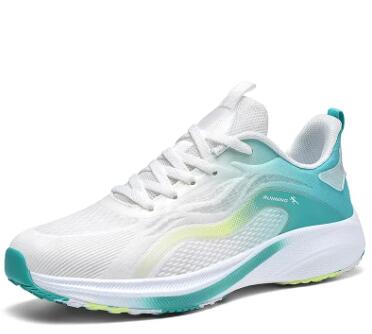How do sports shoes differ from regular shoes
2023-10-27
Sports shoes differ from regular shoes in several ways, primarily because they are specifically designed to meet the demands of athletic activities. Here are the key differences between sports shoes and regular shoes:
1. Purpose and Design:
- Sports shoes are designed for athletic performance, providing features that cater to the unique needs of different sports and physical activities. Regular shoes are typically designed for everyday use, fashion, or casual wear.
2. Support and Cushioning:
- Sports shoes often have enhanced support and cushioning to absorb shock, reduce impact on joints, and improve stability during athletic activities. Regular shoes may have more basic cushioning, primarily for comfort during everyday activities.
3. Fit and Sizing:
- Sports shoes are engineered to provide a snug and secure fit, reducing the risk of foot movement within the shoe during physical activities. Regular shoes may offer a looser fit for casual comfort.
4. Outsole Traction:
- Sports shoes have outsoles with specialized tread patterns that provide superior traction on various surfaces, optimizing performance and preventing slips. Regular shoes may have simpler outsoles designed for typical walking conditions.
5. Weight:
- Sports shoes are often lighter in weight to enhance agility and performance during sports, while regular shoes may have a broader range of weights depending on their intended use.
6. Flexibility:
- Sports shoes offer varying degrees of flexibility, catering to specific athletic movements and requirements. Regular shoes may have a more balanced or versatile level of flexibility.
7. Stability and Motion Control:
- Sports shoes may incorporate stability and motion control technologies to address overpronation or supination, which are common issues in athletes. Regular shoes typically do not have these features.
8. Breathability:
- Sports shoes often feature advanced materials and designs for better breathability, moisture management, and temperature regulation during physical activities. Regular shoes may prioritize style over breathability.
9. Specific Sport or Activity Features:
- Sports shoes are tailored to the demands of particular sports or activities. For example, running shoes have cushioning and flexibility for forward motion, while basketball shoes have ankle support and impact protection.
In summary, sports shoes are engineered with the needs of athletes in mind, providing features such as support, cushioning, and traction to enhance performance and minimize the risk of injuries. Regular shoes, on the other hand, prioritize comfort, style, and versatility for everyday wear.



